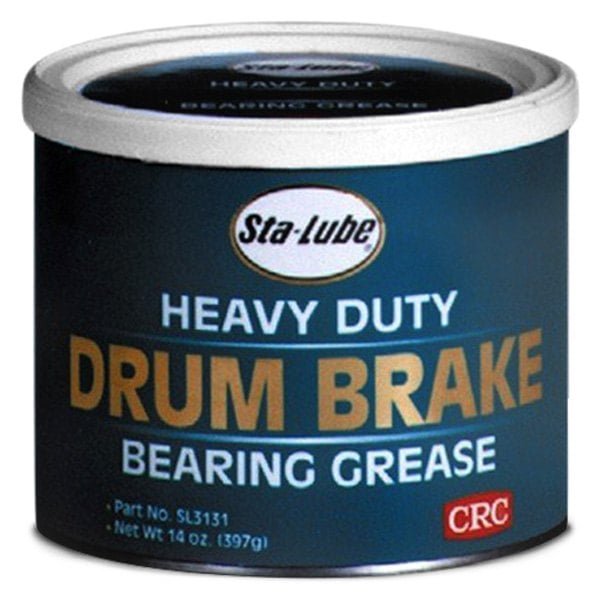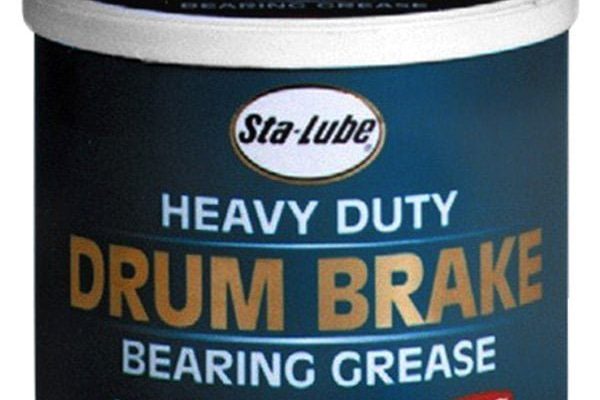
You might be thinking, “Aren’t all lubricants basically the same?” Not really. Just as there are different types of remotes for TVs—universal, brand-specific, or smart remotes—there are a bunch of different bearing types jammed inside those tough, heavy-duty hinges, and each one likes its own brand of grease or oil. Let me explain why matching your lubricant to your bearing design can save you from costly repairs, downtime, and even the chaos of a hinge that just seizes up when you need it the most.
Why Bearing Type Matters For Heavy-Duty Hinges
First, let’s get clear on why you can’t just slap any old grease on a heavy hinge and call it a day. Heavy-duty hinges aren’t built like the wimpy ones on your bedroom closet. They pack serious engineering—sometimes rolling on ball bearings, sometimes gliding on sleeve or needle bearings. Each bearing type is like a different lock that needs its own key (or, in this case, lubricant).
When you use the wrong lube, you can block the bearing’s motion instead of helping it. Imagine syncing a universal remote to a TV with the incorrect code. It won’t work—and sometimes can actually mess things up. Same deal with bearings: grease that’s too thick can gum up a ball bearing, while thin oil might run out of a sleeve bearing long before it does its job. Getting the pairing right keeps things rust-free, moving quietly, and lasting longer—just like troubleshooting a remote to catch the right signal.
There’s also temperature, pressure, and exposure to think about. Some lubricants hold up to snowy winters, salt spray, or roasting-hot machinery rooms. Others just can’t hack it. So, knowing your hinge’s bearing type sets you up to “sync” the right lube and keep everything working in harmony.
Best Lubricants For Ball Bearing Hinges
Ball bearing hinges are the go-to for ultra-smooth movement, especially on doors that see tons of action. These hinges use tiny steel balls that roll between surfaces, cutting down friction. But here’s the thing—if you use the wrong lubricant, those little balls can get sticky or even rust, which totally ruins the smooth ride.
High-viscosity synthetic oils or light lithium-based greases are your best choices here. Why? They provide enough slipperiness to keep the balls rolling, but they won’t get so thick that dirt and dust stick to them. For example, a product like Super Lube Multi-Purpose Synthetic Grease is a solid pick because it’s non-toxic, water-resistant, and won’t break down under pressure or temperature changes.
If your hinges live outdoors or in rough industrial spaces, look for lubricants that offer corrosion resistance and don’t dry out. You might be tempted to grab that can of WD-40, but honestly, that’s just a temporary fix. It’s like putting a band-aid on a leaky pipe instead of fixing the actual problem. Go for something made for ball bearings—your ears and your doors will thank you.
Top Lubricant Picks For Sleeve (Plain) Bearing Hinges
Sleeve bearings (sometimes called *bushings* or *plain bearings*) are all about sliding, not rolling. Imagine the smooth glide of butter on a hot pan. These bearings have one surface sliding directly across another, often made of bronze or brass. Here, the type of lubricant you use makes a big difference in preventing wear and tear.
Graphite-based greases or thick mineral oil blends work best for sleeve bearings. What you want is a film that stays put, even when the hinge bears heavy loads or faces a lot of start-stop motion. Heavy-duty products like Lubriplate No. 630-2 or graphite-impregnated greases stick to the metal, create a strong barrier, and help prevent the “metal-on-metal” sound nobody likes.
If you’re dealing with hinges in hot or dirty environments (like factory floors or outdoor gates), go for a lubricant that resists washout from rain or cleaning. Many industrial users swear by graphite paste for its ability to “reset” by forming a stable layer even after heavy use. The point is, sleeve bearings need something that won’t drip away or evaporate under pressure.
Lubrication For Needle Bearing Hinges
Needle bearings are the unsung heroes in some of the toughest, most compact hinge designs. They use thin, cylindrical rollers to support massive loads in tight spaces. The challenge? These bearings have very little room for error when it comes to lubrication—just a bit of dirt, or the wrong grease, and things can seize up fast.
Here’s where EP (Extreme Pressure) synthetic greases shine. Brands like Mobilgrease XHP 222 or Shell Gadus S2 V220 are made to handle the crushing forces inside needle bearings and prevent metal-to-metal contact, even if the hinge is loaded to the limit. These greases cling to moving parts and won’t break down when temperatures spike or, worse, when water tries to sneak in.
You might hear about folks using simple machine oils on needle bearings—don’t do it. That’s like trying to pair a smart remote to an old TV with no code. The oil just can’t protect the rollers, and you’ll end up with expensive repairs. Stick with EP-rated products whenever you see needle bearings inside your heavy-duty hinges.
How To Apply Bearing Lubricant For Heavy-Duty Hinges
Picking the right lubricant is half the battle—the other half is applying it the smart way. Even the best grease in the world won’t help if it never gets to the bearing surfaces. Here’s a basic, beginner-friendly method to “sync up” your hinges with their new lubricant:
- Clean the hinge: Use a rag and some mild degreaser to wipe away old grease, dirt, and grit. This resets the hinge so your new lube can do its job.
- Apply lubricant: For grease, use a small brush or your finger to work it into the bearing area. For oil, a few drops at the pivot point will do. Don’t overdo it—a light, even coat is best.
- Work the hinge: Open and close the hinge several times to help the lubricant reach every surface.
- Wipe away residue: Any extra lube on the outside can attract dust, so clean it up.
You might be wondering about grease fittings or “zerk” points. If your hinge has them, use a grease gun made for your lubricant type, and pump just until you see fresh grease squeeze out. If not, careful manual application works fine for most doors, gates, or machinery.
Comparing Universal Lubricants vs. Bearing-Specific Greases
It’s tempting to reach for a universal lubricant. They’re easy to find, usually cheap, and promise to fix just about everything. But here’s the truth: there’s a reason pro mechanics and facilities managers keep a shelf of specialty products. Universal lubricants are “okay” for a quick fix, but they break down fast and don’t offer the level of protection that heavy-duty bearing-specific greases can.
Think of it like using a universal remote for your smart TV—it might handle basic functions, but you miss out on all the “advanced” features and reliability. Bearing-specific lubricants are made for the job, with additives to handle high loads, moisture, or extreme temperatures. Sure, you might spend a few extra bucks, but you’re buying years of smooth movement instead of just a few days’ relief.
If you absolutely must use a universal product, reach for a synthetic blend with at least some water and rust protection. But if you care about your hinges’ long-term health—and want to avoid the “reset” of replacing them early—stick to the right grease for your bearing type.
Common Pitfalls and Troubleshooting Bearing Lubrication
Even seasoned maintenance teams can slip up when it comes to bearing lubrication. Some of the biggest pitfalls? Over-greasing (which forces old, contaminated grease into the bearings), under-lubricating (which leaves metal dry and prone to wear), or ignoring the manufacturer’s specs for both bearings and lubricants.
One classic mistake is mixing grease types. Oils and greases don’t always play nice together—mixed products can separate, lose their protective qualities, or gum up bearings entirely. Always check what’s already in the hinge before adding more. If you’re unsure, it’s safer to remove the old lube, clean the surfaces, and “sync” with a fresh application of a single, bearing-appropriate product.
Another issue is not paying attention to cleanliness. A little bit of grit or dirt can quickly destroy that silky-smooth motion. Take a minute to wipe down the hinge before every application, and you’ll save yourself hours of troubleshooting down the road.
Lastly, keep an eye on environmental conditions. If your hinges see lots of weather, chemical sprays, or temperature swings, choose lubricants made for those extremes. Just like picking the right battery for a remote, choosing the right lube helps you avoid random failure and keeps everything running smoothly.
Choosing The Right Lubricant Brand: What To Look For
There’s no shortage of lube brands out there—some promise the moon, others are just rebadged generics. So, how do you pick? Here’s what matters most for heavy-duty hinge bearings:
- Match to bearing type: Make sure the product specifically lists your hinge’s bearing (ball, sleeve, needle, etc.) on the label or spec sheet.
- Check for extreme pressure (EP) additives: These beef up grease for heavier loads and stop metal-to-metal contact.
- Look for water resistance and anti-corrosion protection: Especially critical if your hinges live outdoors or in humid areas.
- Read reviews or ask around: Sometimes, a little word-of-mouth can help you avoid the duds and find the gems—whether you’re shopping for Super Lube, Mobil, Shell, or another trusted brand.
If you’re maintaining dozens of hinges in a facility, it pays to standardize on one or two proven lubricants for each bearing type. This avoids mix-ups, makes restocking easier, and helps with troubleshooting if anything goes wrong.
Final Thoughts: Keeping Heavy-Duty Hinges Moving Smoothly
Keeping heavy-duty hinges in top shape doesn’t have to be complicated—as long as you match your lubricant to the hinge’s bearing type and stay on top of regular maintenance. The payoff is silent doors, fewer breakdowns, and a whole lot less frustration. Remember, a little extra thought now saves you time (and money) later. Picking the *best lubricant for your specific bearing* isn’t just about quiet hinges—it’s about getting the most life and reliability out of every swing, slide, and pivot those hinges make.
If you’re still unsure about which lube to use, start by checking your hinge’s specs and thinking about how it gets used. From there, pick a trusted, bearing-specific product, clean your hinge, and apply just enough to cover the moving parts. Your doors—and your sanity—will stay in sync for years to come.
